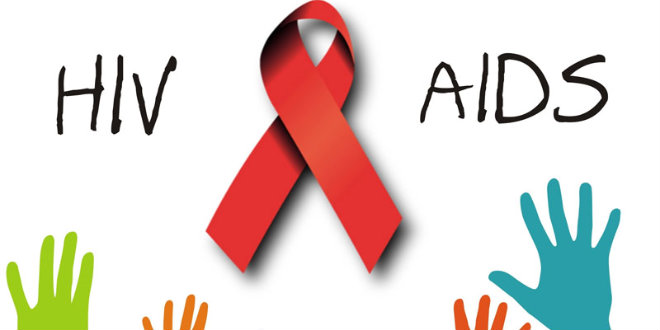Prostate cancer is an abnormal and uncontrolled growth of cells found in your prostate gland. Your prostate gland is about the size of a walnut and lies at the base of your bladder.
Prostate cancer is the most common cancer among men (after skin cancer), but it can often be treated successfully. More than 2 million men in the US count themselves as prostate cancer survivors.
Causes of prostate cancer
As with all types of cancer, it’s not clear what causes prostate cancer.
Doctors know that prostate cancer begins when some cells in your prostate become abnormal. Mutations in the abnormal cells’ DNA cause the cells to grow and divide more rapidly than normal cells do. The abnormal cells continue living, when other cells would die. The accumulating abnormal cells form a tumor that can grow to invade nearby tissue. Some abnormal cells can break off and spread (metastasize) to other parts of the body.
source – mayoclinic
Symptoms of prostate cancer
Not everyone experiences symptoms of prostate cancer. Many times, signs of prostate cancer are first detected by a doctor during a routine check-up.
Some men, however, will experience changes in urinary or sexual function that might indicate the presence of prostate cancer. These symptoms include:
- A need to urinate frequently, especially at night
- Difficulty starting urination or holding back urine
- Weak or interrupted flow of urine
- Painful or burning urination
- Difficulty in having an erection
- Painful ejaculation
- Blood in urine or semen
- Frequent pain or stiffness in the lower back, hips, or upper thighs
source – pcf
Stages of prostate cancer
Prostate Cancer Stage I
In stage I, prostate cancer is found in the prostate only and the PSA is <10. Stage I prostate cancer is microscopic, meaning it can’t be felt on a digital rectal exam (DRE) and it isn’t seen on imaging of the prostate. At most the tumor involves less than one-half of one lobe of the prostate.
Prostate Cancer Stage II
In stage II, the tumor has grown inside the prostate, but hasn’t extended beyond it. The tumor can involve more than one-half of one lobe of the prostate without involving both lobes (stage II-a). Or the tumor can involve both lobes (stage II-b).
Prostate Cancer Stage III
Stage III prostate cancer has spread outside the prostate, but only barely. Prostate cancer in stage III may involve nearby tissues, like the seminal vesicles. There is no spread to lymph nodes nor metastasis to distant tissue.
Prostate Cancer Stage IV
In stage IV, the cancer has spread (metastasized) outside the prostate to other tissues. Stage IV prostate cancer commonly spreads to lymph nodes, the bones, liver, or lungs.
Accurately identifying the prostate cancer stage is extremely important. Prostate cancer stage helps determine the optimal treatment, as well as prognosis. For this reason, it’s worth going through extensive testing to get the correct prostate cancer stage
Source – webmd
TNM stages of prostate cancer
Prostate cancer is staged using the TNM system. This is used all over the world. It separately assesses the tumour (T), lymph nodes (N) and secondary cancer (metastases – M).
T (tumour) staging
T1 tumours are too small to be seen on scans or felt during examination of the prostate – they may have been discovered by needle biopsy, after finding a raised PSA level
T2 tumours are completely inside the prostate gland and are divided into 3 smaller groups
- T2a – The tumour is in only half of one of the lobes of the prostate gland
- T2b – The tumour is in more than half of one of the lobes
- T2c – The tumour is in both lobes but is still inside the prostate gland
T3 tumours have broken through the capsule (covering) of the prostate gland but have not spread into other organs – they are divided into 2 smaller groups
- T3a – The tumour has broken through the capsule (covering) of the prostate gland
- T3b – The tumour has spread into the seminal vesicles
T4 tumours have spread into other body organs nearby, such as the rectum (back passage), bladder, muscles or the sides of the pelvic cavity
N (lymph node) staging
Lymph nodes are described as being ‘positive’ if they contain cancer cells. If a lymph node has cancer cells inside it, it is usually bigger than normal. The more cancer cells it contains, the bigger it will be.
- NX – The lymph nodes cannot be checked
- N0 – There are no cancer cells in lymph nodes close to the prostate
- N1 – There are cancer cells present in lymph nodes
M staging – metastases (cancer spread)
- M0 – No cancer has spread outside the pelvis
- M1 – Cancer has spread outside the pelvis
- M1a – There are cancer cells in lymph nodes outside the pelvis
- M1b – There are cancer cells in the bone
- M1c – There are cancer cells in other places
Source – CancerResearchUk
Treatment of prostate cancer
Depending on the situation, the treatment options for men with prostate cancer might include:
- Expectant management (watchful waiting) or active surveillance.
- Surgery.
- Radiation therapy.
- Cryosurgery (cryotherapy)
- Hormone therapy.
- Chemotherapy.
- Vaccine treatment.
- Bone-directed treatment.
These treatments are generally used one at a time, although in some cases they may be combined.
The treatment you choose for prostate cancer should take into account:
- Your age and expected life span
- Any other serious health conditions you have
- The stage and grade of your cancer
- Your feelings (and your doctor’s opinion) about the need to treat the cancer right away
- The likelihood that each type of treatment will cure your cancer (or help in some other way)
- Your feelings about the possible side effects from each treatment
Source – cancer.org
Dear men, go for general routine check-up today as early detection of any type of cancer is key to a successful treatment.






1 comment
It’s good to know that prostate cancer can still be treated successfully once diagnosed. However, I’m still worried about the fact that it is too common and anyone could easily acquire it. I wonder if there are ways on how I can provide support for this cause by shopping or browsing online.